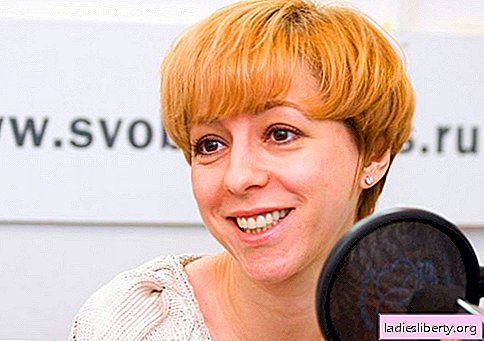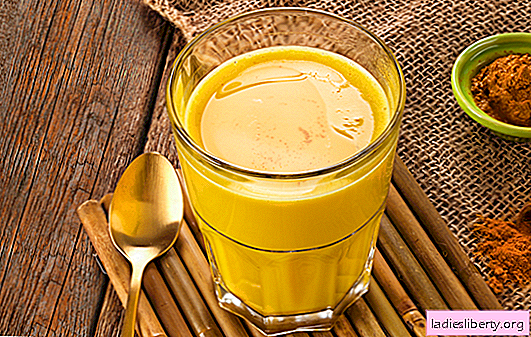
Inflammation of the trachea (tracheitis) is an inflammatory process in the mucous membrane of the trachea, mainly of an infectious nature, clinically manifested by dry cough (sometimes a cough with sputum that is difficult to separate), pain behind the sternum, and temperature.
Tracheitis as an independent disease does not occur. Rather, it can be called a syndrome. The infection usually spreads from the nasopharynx and enters the bronchi. Then, depending on the clinical manifestations, it is necessary to treat tracheobronchitis, laryngotracheitis, pharyngotracheitis (or rhinopharyngotracheitis).
Inflammation of the trachea - causes
The cause of tracheal inflammation is in most cases conditionally pathogenic flora, which is constantly in the body and is activated under the influence of any external factors. In addition to the conditionally pathogenic flora, the cause of inflammation is the pathogenic flora: staphylococcus, streptococcus, pneumococcus. These bacteria are not very resistant to external factors, therefore, infection can occur by airborne droplets, but in the immediate vicinity of the patient (coughing, talking, sneezing).
Another common cause of tracheal inflammation is a viral infection. Tracheitis sometimes occurs against the background of influenza, measles, rubella, scarlet fever, chicken pox.
There is a non-infectious cause of tracheal inflammation - an allergy. In this case, as with tracheitis of any other etiology, the nasopharynx and bronchi are involved in the process.
What provokes inflammation of the trachea
Various factors can provoke the occurrence of tracheal inflammation:
- cold, very humid or dry air;
- toxic gases and vapors;
- dust - industrial and domestic;
- tobacco smoke;
- general hypothermia of the body;
- a variety of allergens - food, contact, infectious.
Contributes to the development of inflammation of the trachea, a decrease in immunity, which developed in the presence of:
- foci of chronic infection (sinusitis, tonsillitis, stomatitis, etc.);
- immunodeficiency resulting from radiation therapy, x-ray therapy;
- severe somatic diseases (diabetes mellitus, cirrhosis, rheumatism, kidney pathology);
- chronic infections (tuberculosis, tonsillitis. adenoids);
- Long-term use of cytostatics, immunosuppressants and other drugs that suppress immunity.
Allergic tracheitis is a response of the body to various allergens found at home, at work, on the street.
Often an allergy to the microbe itself joins the infectious inflammation of the trachea, and an infectious - allergic tracheitis develops.
Thus, tracheitis by etiological factor is classified as:
- infectious (bacterial and viral);
- allergic;
- infectious - allergic.
The course is divided into acute and chronic.
Inflammation of the trachea - symptoms
The main clinical symptom of tracheal inflammation is a dry cough, aggravated at night and in the morning. Over time, it becomes productive: thick sputum begins to recede, first mucous, then purulent. This indicates the attachment of a bacterial infection.
In the acute course of tracheal inflammation, symptoms characteristic of any acute inflammatory process are observed: fever above 390, which occurs mainly in the evenings, although subfebrile condition is much more common. Symptoms of intoxication are practically absent. Weakness, lethargy, unmotivated fatigue may disturb. But the biggest discomfort creates a cough, because of which sleep is disturbed, severe headaches arise.
If pharyngitis joins - joins a sore throat, discomfort when swallowing. With laryngotracheitis - hoarseness of the voice. With the spread of the inflammatory process to the bronchi, cough and fever intensify. Acute inflammation of the trachea lasts about two weeks. In the future, either recovery occurs or the disease becomes chronic. It depends on immunity, general condition, timely initiation of treatment, concomitant diseases. The chronic course of tracheal inflammation is characterized by night and morning cough. The temperature is never high - mainly subfebrile condition. Concerned about the pain behind the sternum. Chronic inflammation of the trachea is characterized by periods of exacerbations and remissions, may become protracted. It is transferred much easier than acute inflammation of the trachea due to the mild symptoms. But the timing of the exacerbation is significantly extended. With proper treatment, recovery can occur in about a month.
An allergic form of tracheitis is also manifested by paroxysmal cough.
There are no complications after tracheitis. Only in cases where inflammation spreads to neighboring organs. For example, tracheobronchitis can cause bronchopneumonia. Cases are described when laryngotracheitis was complicated by laryngeal stenosis in young children. We observed endotracheal malignant and benign neoplasms that developed after a protracted chronic course of tracheitis.
Tracheal inflammation - treatment. What to do to be healthy
Inflammation of the trachea is treated on an outpatient basis. Inpatient treatment is carried out in case of high temperature for a while, until it is possible to normalize the temperature.
The goals of treating tracheal inflammation are:
- effects on the etiological factor, i.e., on the pathogen;
- relief of symptoms of the disease;
- preventing the development of complications and the transition of the disease into a chronic form.
An effective treatment for tracheal inflammation is when all sorts of potential irritants are removed and complete rest is prescribed.
Etiological treatment
Treatment of tracheal inflammation begins with the appointment of an antibiotic if it is proved that tracheitis is caused by a bacterial infection (purulent sputum, temperature above 38.50). Now there is a wide selection of effective antibacterial drugs of various groups. Penicillins, cephalosporins, macrolides are used. But, basically, antibiotic treatment is not required. In rare cases, bronchial inflammation is so severe that an antibiotic is required. Basically, there are enough symptomatic, desensitizing and local therapy.
If a viral etiology of tracheitis is established, antiviral drugs are used (Interferon, Kagocel, Arbidol, etc.). With an established allergic etiology of tracheitis, treatment is carried out with antihistamines (Loratadin, Suprastin, Cetrin, Tavegil, etc.).
Symptomatic therapy is aimed at reducing the severity of the symptoms of the disease. In the first few days, it is permissible to use antitussive drugs if the dry cough does not allow you to sleep and lead a familiar lifestyle. You can take drugs such as Libexin, Herbion, Glauvent, Tusuprex, etc. In the future, as soon as the cough starts to become productive, antitussive drugs should be canceled. Further, bronchodilators, mucolytics, expectorants, expectorants (Lazolvan, Ambroxol, Bromhexine, Bronchomunal, Acetylcysteine, Mukobene, etc.) are used to treat cough.
Local therapy
Local inhalers ("Cameton", "Hexoral", etc.) are used, as well as inhalations through a nebulizer of bronchodilators, expectorant drugs. The advantage of local therapy is that the drug acts directly on the inflamed mucosa, and its effectiveness is thus increased. But inhalation can not be treated in the acute phase if there is a dry cough and high fever. When the drug is inhaled through a nebulizer, enveloping with fine particles of the mucous membrane of the pharynx and trachea occurs. Through a nebulizer you can inhale alkaline mineral water, decoctions of anti-inflammatory and expectorant herbs (chamomile, sage, propolis), even saline solution will be effective. Traditionally, inhalations are used at home. Classical treatment with potato steam; inhalation with a freshly prepared mixture of garlic and onions, inhalation with honey, eucalyptus. A good effect is given by black radish juice with honey, infusions of herbs (mother and stepmother, thyme, chamomile, elecampane, series).
Physiotherapeutic treatment is also successfully applied.: UHF, electrophoresis, massage.
In order to avoid all the unpleasant symptoms of tracheitis, certain rules must be followed. The first and most important rule: strive to be healthy. For this to happen, you need to temper the body, avoid hypothermia and congestion during the epidemic of respiratory infections, stop smoking, limit allergens in your life as much as possible, change jobs, if it is a harmful production, treat chronic foci of infection on time and effectively.











